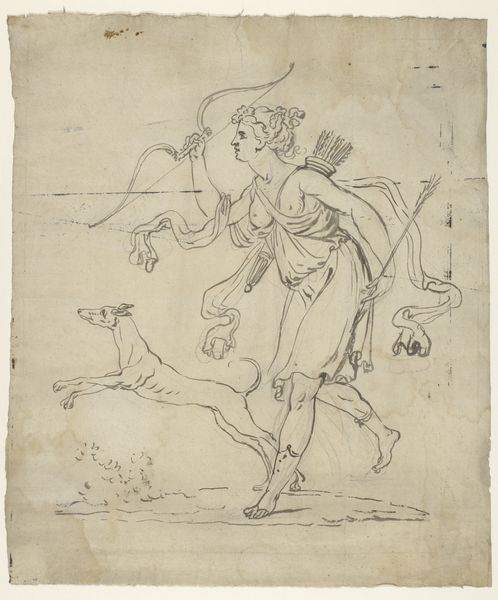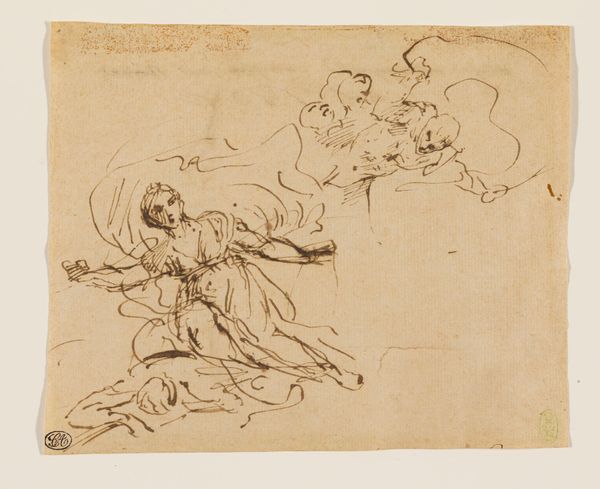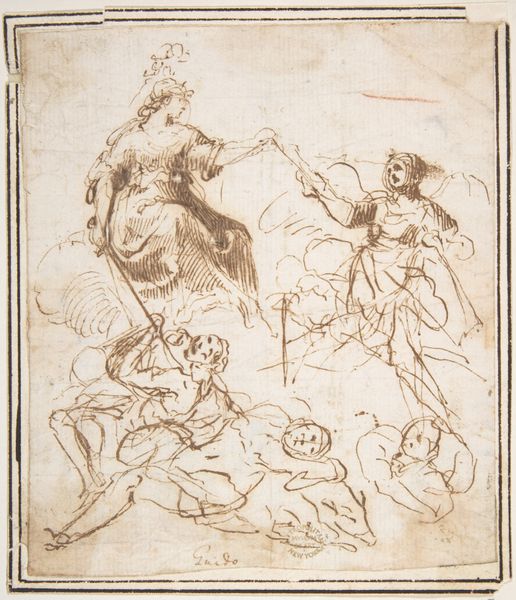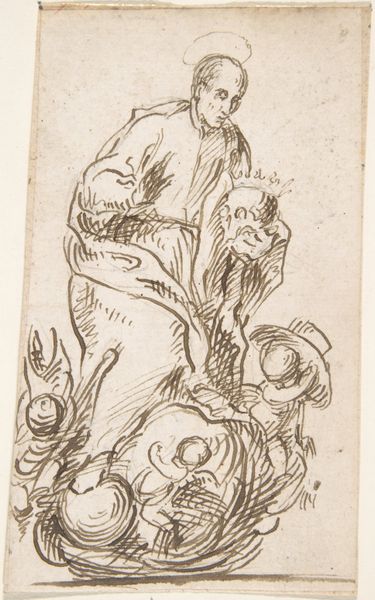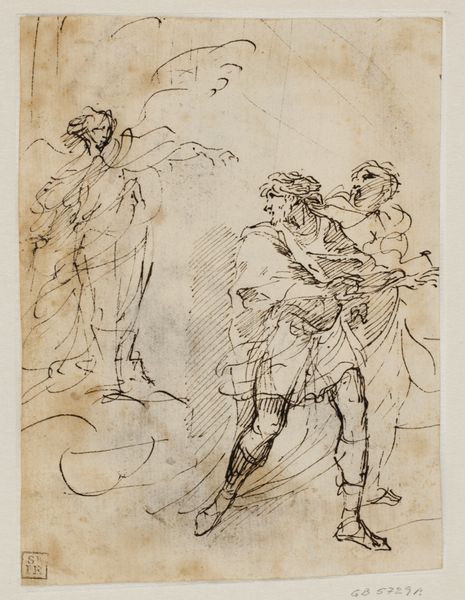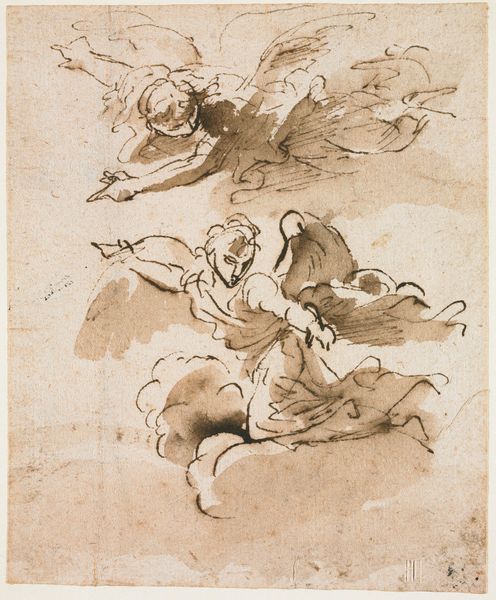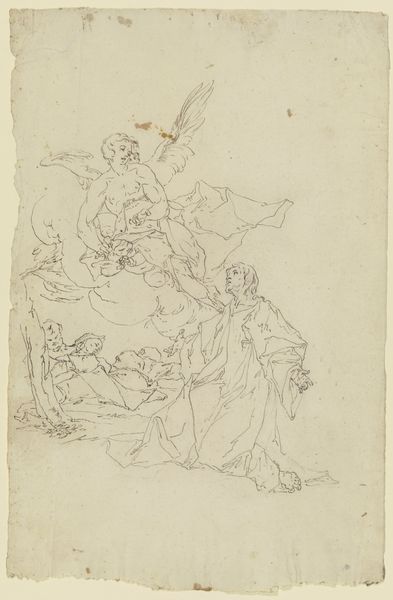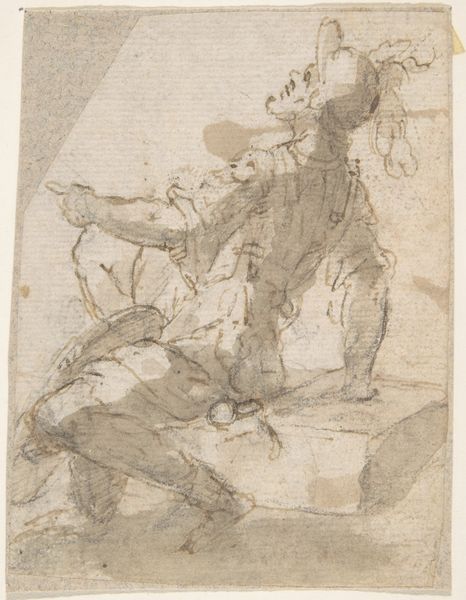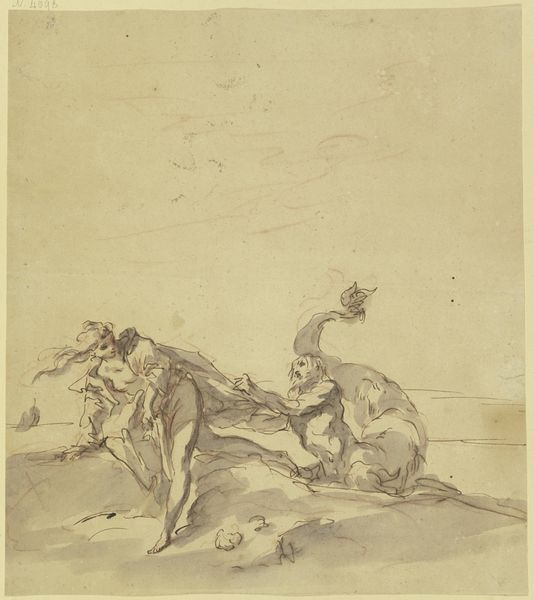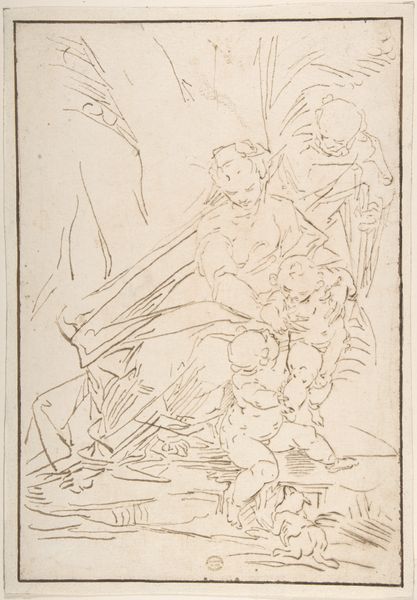
drawing, ink
#
drawing
#
mannerism
#
figuration
#
ink
#
history-painting
#
italian-renaissance
Dimensions: Sheet: 12 1/4 x 8 7/16 in. (31.1 x 21.4 cm)
Copyright: Public Domain
Curator: What a striking composition. Luca Cambiaso's ink drawing, "Study of Two Male Figures Fighting," likely executed between 1540 and 1585, immediately captures a raw, visceral energy. Editor: Yes, it’s quite forceful. I’m immediately struck by the vulnerability of the figure on the ground, contrasted against the dynamic aggression of the figure standing over him. There’s an almost primal scene of dominance and submission being played out here. Curator: Absolutely. Cambiaso, working during the Italian Renaissance and demonstrating clear Mannerist influences, was fascinated by the human figure, particularly in motion. Drawings such as this served as crucial preparatory studies for larger history paintings. The subject feels as old as time. Editor: These kinds of images also played a crucial social role; the display of violence could operate as an accepted way for men to perform their roles and status, to signal belonging to a specific warrior social class or affiliation, but that visual signal is now deeply ambivalent. This image feels far less glamorous today. Curator: Precisely. It reflects both its time and continues to ask us questions today. His emphasis on capturing the body's dynamism hints at the burgeoning scientific interest in anatomy and movement that characterized the Renaissance, and he does so through dramatic compositions and emotional poses, setting the scene in dramatic fashion. Editor: Look at how the man on top, even in the throes of attacking his foe, maintains a sense of, I don’t know, controlled anger? Or a theatrical posturing, maybe? Curator: Indeed. Art in that era wasn't just a reflection of reality. It was an instrument of power, persuasion, and spectacle, utilized by patrons to demonstrate authority and influence through commissioning heroic representations and visually persuasive examples. Editor: It serves as a reminder that, beyond its purely aesthetic or art historical value, imagery, and therefore art, can play such a complex cultural function, in the process reminding the audience that they, too, have agency in how they understand such imagery, especially its historical depictions of power dynamics and human interaction. Curator: That's wonderfully put. By exploring his figure studies, we delve into an era of remarkable artistic ingenuity while examining our continuously shifting understanding of symbolism. Editor: Agreed, it leaves one with a thoughtful and troubled reflection, doesn't it?
Comments
No comments
Be the first to comment and join the conversation on the ultimate creative platform.
